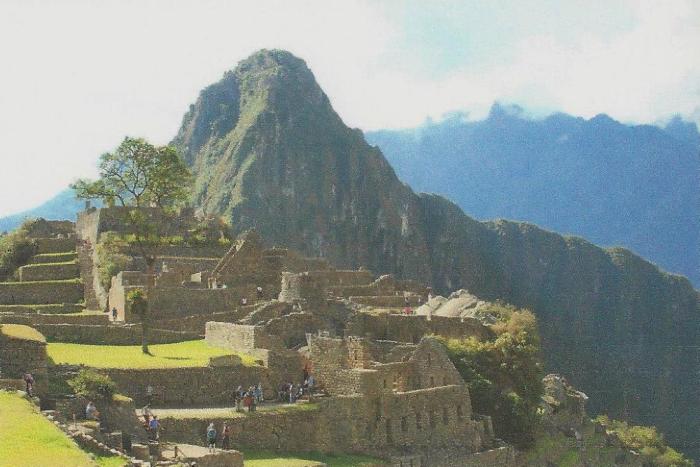 |
Canku Ota
|
 |
|
(Many Paths)
|
||
|
An Online Newsletter
Celebrating Native America
|
||
|
November 2016 - Volume
14 Number 11
|
||
|
|
||
|
Ten Ho-Chunk Elders
Trek To South America For Fun, Education And Cultural Understanding
|
||
|
by Ken Luchterhand -
Hocak Worak
|
||
It all started about a year ago – just a casual conversation about what each person had on his or her bucket list. That conversation at the Tribal Aging Unit turned a dream into reality. "I was talking to Rosalee Brownthunder and she said visiting Israel was on her bucket list," said JoAnn Jones. "I said Machu Pichu was on my bucket list. I also wanted to see the Amazon River." "Let's not just talk about it – let's do it," Maxine Kolner said. Rosalee began talking to Dianna Thundercloud about the possibility of taking such a trip and soon it snowballed. Other people expressed interest in going along, so Dianna talked to the staff at Higgins Travel in Black River Falls to see what might be possible. Twelve people jumped onboard with the trip immediately, making deposits for the trip that would be a year away. Some of them dropped out, for one reason or another over the year, but other people took their places, so that eventually 10 Ho-Chunk members were set to go. "JoAnn opened the invitation to whoever wanted to go," said Bow Lucero, who went with his mother, Linda Hopinka. Going on the trip to South America were JoAnn Jones, Tom Jones, Bow Lucero, Linda Hopinka, Elliot Kolner, Maxine Kolner, Diana Thundercloud, Bill Kingswan, Mike Schmudlach and Linda Schmudlach. Diana served as an interpreter since she speaks fluent Spanish. They left on August 4 from various airports, such as Minneapolis, Madison and Chicago, and all gathered in Miami, Florida, for the next leg of the journey, combining with other people from across the country who would join the tour for a total of 28 people. The next morning the group boarded a plane for Bogota, Columbia, then boarded a connecting flight to Quito, Ecuador. Arriving the afternoon on Aug. 5, they checked into their hotel, ate dinner and prepared for the next day. That next day, they spent exploring the reaches of Quito.
Throughout the city, remnants of Inca civilization still exists. The people who live there today, the Quiche, are descendants of the Incas. The highlight of the city tour was a tourist destination that showed a line on the ground, indicating a representation of the equator. People danced on the equator. There was a portion of the city that was a traditional village where many crafts were sold, including weavings. "One of the neat things is that dogs were roaming all over. They were tame, but free and no one was bothered by them," Bow said. The next day, they checked out of the hotel and boarded a bus to travel across the east Andes Mountains. Bow described it as a dangerous trip, with narrow roads, sheer drop-offs on the outside edge, and no guardrails. As they rode, the climate changed and the vegetation dwindled. Some people aboard began to get altitude sickness. Going down, everything turned green again. It was about a five-hour drive across the Andes before reaching a bird sanctuary in what is named the "Cloud Forest." They stopped for about an hour, admiring the exotic birds and flowers, before moving on. Further down, they encountered more and more jungle. They eventually made it to their destination: Casa del Suizo, their hotel for the next few days, right on the banks and overlooking the Napo River in eastern Ecuador. One of their first ventures in their new location was a trip 10 miles down the river in a canopy-covered boat. "It was neat and beautiful. The water was between 15 and 20 feet deep and there were traditional huts all along the river banks," Bow said. "It was about 90 degrees and very high humidity." They visited a native family in their home. The houses are built on poles above the ground, which prevents many insects and other ground dwelling creatures from entering the house. The walls were enclosed only four feet high, then open above that to provide fresh air, yet no bugs seemed to enter. Inside, a wood stove has a fire burning in it all the time, day and night. It has special rocks in it, one for each member of the family. Termite-created substance was continually burned, the smoke giving off a scent that repelled insects from the home. Elliot said he particularly enjoyed connecting with the native culture, which is 95 percent of the population. "They're still living the way they always did," he said. To combat altitude sickness, the people chew cocoa leaves, which are available almost everywhere. They are even available to passengers at the airport. "They and their ancestors have been eating the cocoa leaves for thousands of years," Bow said.
"There are plants nearby that produce a special type of seed. Those seeds are used for making face paint," he said. At the end of their home visit experience, they took the boat back upriver and retreated to their rooms at the hotel. That night it began raining at 10 p.m. and rained all night. "There were no windows, but the openings all had screens. We heard all kinds of bugs that night, and even monkeys. It was a beautiful noise," he said. The next day, Aug. 8, they spent the day on a jungle walk. The guides were very knowledgeable and provided information on much of the flora and fauna along the way. The journey was about 12 miles and included a ride across a canyon on a zip line. "We even got to eat some ants that gave us a burst of energy. They tasted like lime," Bow said. They talked about the medicinal values of the plants and natural cures. After the hikes, they went down river to a place called Amazoonia, a nature sanctuary where they kept pigs, monkeys, wild cats, macaws and other animals that couldn't live on their own. The next day, Aug. 9, the group headed back to Quito and they flew to Lima, Peru. The next day, they toured the city, visiting the churches and catacombs. They found out that many of the church were built on top of Inca temples. At La Huaca Puellana, within the city of Lima, they saw the Inca ruins. The largest structure was built from handmade adobe blocks, not from rock. "There are 40 ruins within the city," Bow said. Another area they visited was the Plaza de Los Ancestros, or plaza of the ancestors. Nearby, they were able to buy handmade crafts fairly reasonably from local people. "The exchange rate was good, about 3:1, so we were able to buy everything fairly inexpensively," Elliot said. That evening was celebrated with a great dinner at the hotel. Bill ate some Alpaca and said it was very good - better than beef, in his opinion. The next day, Aug. 11, they departed for Cusco in southern Peru. This was the start of their journey through the land of the Sacred Valley of the Incas, where the more traditional people lived.
Three symbols they regularly saw, part of their religion and beliefs, were the condor, the puma and the serpent. The churches were often built from existing structures and built on top of those walls, combining an old structure with a new one. The next day, Aug. 12, the group traveled to Machu Picchu. "The ride was along the Sacred Valley and all along the valley are ruins, all adobe style. At one point, they couldn't travel by road, so they boarded a train for a 45-minute ride through a crack in the mountains. The only other option was a four day trek by horse or donkey. Arriving in the small town of Machu Picchu, they felt as though they were surrounded by very steep mountains – like walls. A hotel in the small village would be their home for the night, but meanwhile, they wanted to make their way to the famous Machu Picchu ruins at the top. Buses drove on a regular basis to the top, offering tourists a very steep ride that involved a multitude of switchbacks. At the top, regular long lines are formed of the many tourists to see and walk among the remains of the ancient civilization. But once they arrived within the city atop the majestic mountains, it was well worth all the effort, Bow said. "Words can't describe the power of the place," he said. "You can feel the energy."
One of the spheres that towered above the ancient houses and yards and churches and stores was the site of human sacrifices that were made by Incas long ago. A stone stairway extended to the top, but access to those steps was not allowed. That night was spent in Machu Picchu. Maxine gave little Ho-Chunk baskets as gifts to each of the people in the Ho-Chunk group, made by Sidney Hall Jr. She wanted to give them at Machu Pichu but the timing wasn't right, so she gave them at breakfast the next morning. The group made their way to Lima for another night before flying back to Miami on Aug. 15, thus concluding their adventure. But before they left, that night in Lima provided an opportunity to connect with the local, traditional ways. They came upon a group of Shaman, struck up a conversation and spent three hours with them, eating, talking and praying. Now that they have returned to their homes, they reflect on their journey and the impact it has had on their lives. "We made a lot of friends along the way," Maxine said. She encourages others to travel and learn about other cultures and lands. They never saw anything negative. "It was everything I dreamed about," JoAnn said. "It was entertaining, adventurous, spiritual, mystical, magical and surreal," Jones said. "It was more beautiful than I could imagine." "I would do it again. It was very educational," Maxine said. "The cultures were amazing."
|
||
|
|
|
|
||
|
|
||
| Canku Ota is a free Newsletter celebrating Native America, its traditions and accomplishments . We do not provide subscriber or visitor names to anyone. Some articles presented in Canku Ota may contain copyright material. We have received appropriate permissions for republishing any articles. Material appearing here is distributed without profit or monetary gain to those who have expressed an interest. This is in accordance with Title 17 U.S.C. Section 107. | ||
|
Canku Ota is a copyright ©
2000 - 2016 of Vicki Williams Barry and Paul Barry.
|
||
 |
 |
|
|
The "Canku
Ota - A Newsletter Celebrating Native America" web site and
its design is the
|
||
|
Copyright ©
1999 - 2016 of Paul C. Barry.
|
||
|
All Rights Reserved.
|
||
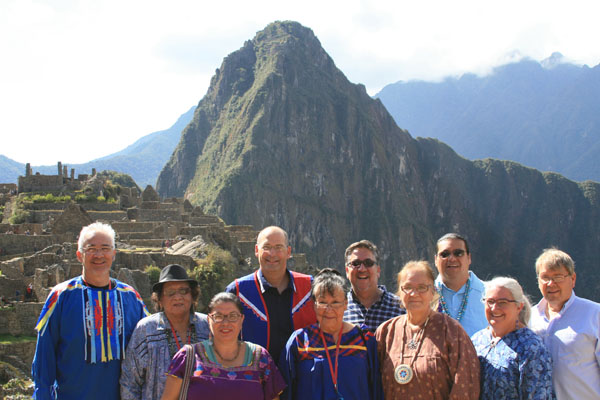
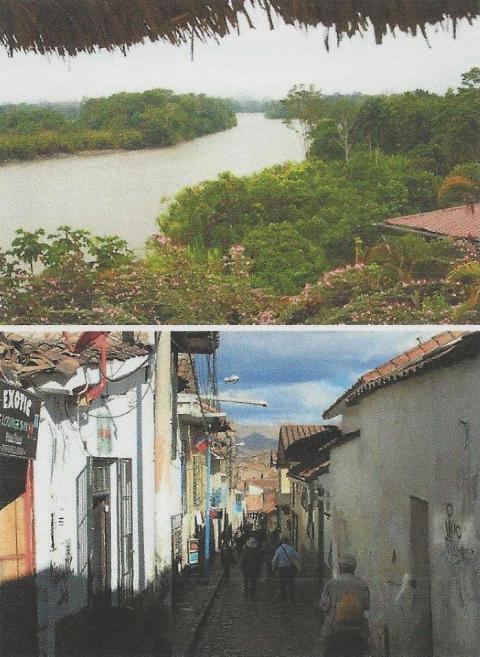 "It
was kind of like a third world city, very old and mountainous, and
had large influences from Spain and the Catholic Church," Bow said.
"It
was kind of like a third world city, very old and mountainous, and
had large influences from Spain and the Catholic Church," Bow said.
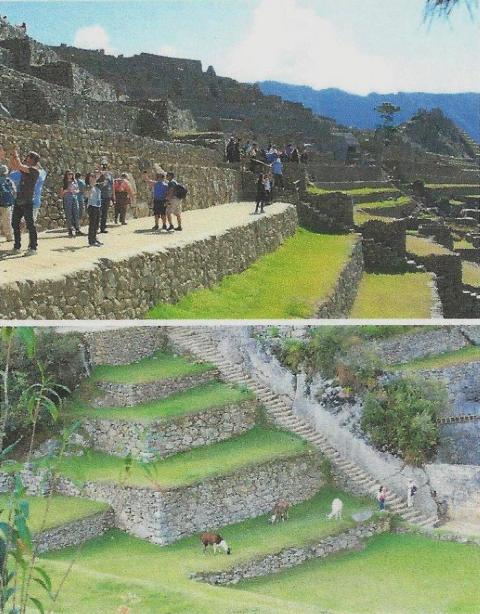 Shooting
with blow darts is something they never thought they would be doing
while on vacation, but they were given that opportunity while visiting
the family in the jungle. They had a fake monkey and honed in their
skills while attempting to strike the monkey with a dart, all the
while wearing hunter face paint.
Shooting
with blow darts is something they never thought they would be doing
while on vacation, but they were given that opportunity while visiting
the family in the jungle. They had a fake monkey and honed in their
skills while attempting to strike the monkey with a dart, all the
while wearing hunter face paint. 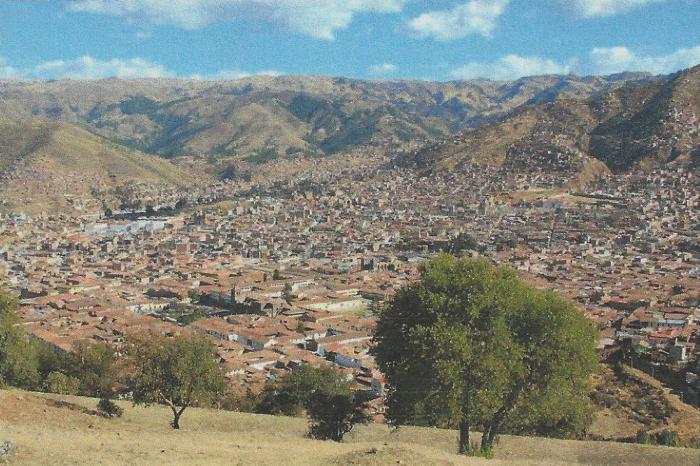
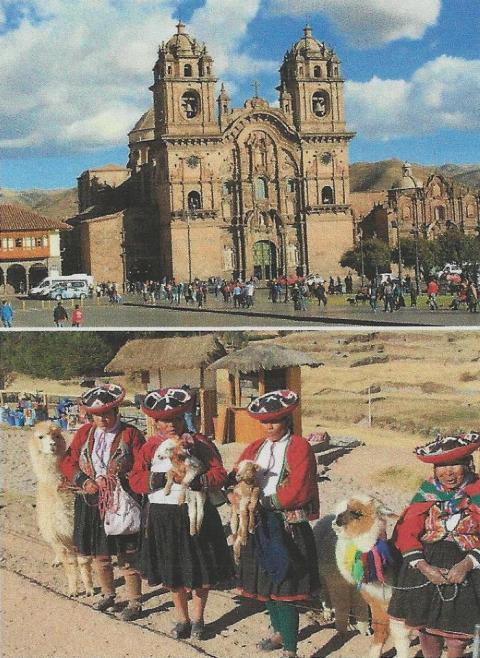 "We
went around Cusco and traditional people were walking around with
their llamas. It was the most awesome city, very traditional, with
churches all over."
"We
went around Cusco and traditional people were walking around with
their llamas. It was the most awesome city, very traditional, with
churches all over." 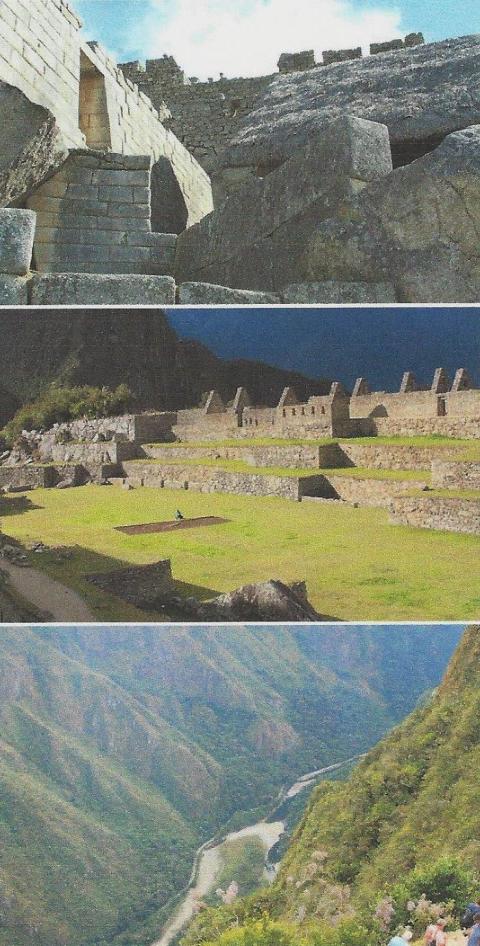 The
stones were cut by hand and fit so closely that a sheet of paper
couldn't be inserted into any of the cracks. Natural waters were
coming out of the mountains and through the ancient village, providing
the needed element for the people so long ago.
The
stones were cut by hand and fit so closely that a sheet of paper
couldn't be inserted into any of the cracks. Natural waters were
coming out of the mountains and through the ancient village, providing
the needed element for the people so long ago. 